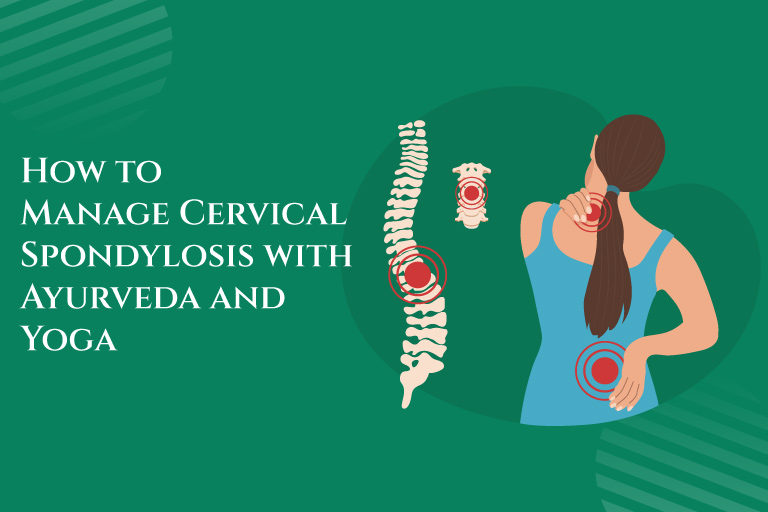How Yoga can help Relieve the Symptoms of Cervical Spondylosis
페이지 정보

본문
In addition to the treatment choices mentioned above, some self-care measures can help prevent or manage cervical spondylosis. If every individual knows his/her own constitution, they can understand what constitutes a healthy diet and lifestyle for themselves. Preventing cervical instability involves identifying and managing risk factors and implementing lifestyle modifications to promote spinal health and stability. Certain medical conditions, like rheumatoid arthritis or spinal infections, may contribute to the development of cervical spondylosis. Exercising also helps to prevent the patient from becoming dependent on medical aids. Which Exercises Are Recommended For A Cervical Spondylosis Patient? Other forms of treatment commonly recommended by doctors include physiotherapy, painkillers, and antidepressants. This will show how the spinal cord is affected and whether any surgical treatment to relieve the pressure is likely to help. In this modern rapid growing world, it is not feasible for everyone to visit the centre for regular treatment. A regular practice of this ancient science leads to a flexible body, calm mind and a positive attitude towards life.
Avoid Overexertion: Do not push yourself too hard; practice at a comfortable pace. Push the sitting bones up, drawing the shoulders and chest forward. Calcium-Rich Foods: Dairy products, almonds, and leafy greens to strengthen bones. Anti-inflammatory Foods: Include foods like turmeric, ginger, and green leafy vegetables. Modern medicine mainly offers physiotherapy as a remedy for this malady, in addition to anti-inflammatory and analgesic (pain relieving) drugs. Be Mindful of Pain: Stop immediately if you experience any pain or discomfort. Neck Pain: Persistent or intermittent pain in the neck region. Troubled by the pinning pain in your neck? Slowly make a double chin by pulling your chin and neck back. Aches and pains in the arms and back will result. Bony constriction of these vertebral arteries will cause decreasd blood flow to the brain and faintness and giddiness will result. For example, routine X-rays of the neck will show these features (osteophytes and disc thinning) in many people who do not have any symptoms. In some cases of spondylitis, signs of vertebral degeneartion in the neck can be readily seen on X-rays. The symptoms of cervical spondylosis can manifest in diverse ways, impacting an individual’s daily life.
These sensations can be difficult to articulate, making it hard for patients to see themselves reflected in generic symptoms or to convey their experiences to healthcare providers effectively. These changes can lead to more bone-on-bone contact as well as pressure and pinched nerves, resulting in various spondylosis symptoms such as neck pain, stiffness, headaches, and numbness or weakness in the arms or hands. Numbness: Tingling or numbness in the shoulders, arms, or hands. Movement of the neck is restricted, and muscular weakness and even wasting of muscles in the arms, giddiness and ringing in the ears are not uncommon. Sedentary Lifestyle: Lack of physical activity leading to weakened neck muscles. It is characterized by pain and muscular spasm in the back of the neck and shoulders. For raising the body, only the back muscles are to be used. It contributes to improved flexibility by relaxing the muscles around the neck and spine. Damage can also occur as a gradual degenerative process, due to wear and tear of the joints, bones, muscles and ligaments of the neck. Toxins accumulate due to poor nutrition or disease. Poor Posture: Prolonged sitting or standing in incorrect postures.
These include gentle asanas (postures) that stretch and strengthen the neck muscles, pranayama (breathing exercises) that reduce tension and improve circulation, and meditation that promotes relaxation and stress relief. Asanas act by reducing muscular tension and spasm and also by correcting posture. Tension headache is also commonly associated. As the curvature of the spine becomes distorted, the nerves become compressed where they exit the spinal canal, resulting in the complex of symptoms often associated with cervical instability. With age, the bones and ligaments in the spine wear, abnormal overgrowth of bones may develop, discs may dry and crack, cartilage may wear out, and ligaments may thicken. Age: Natural wear and tear of the cervical spine as we age. The head should be held erect but with the slightest tilt backward,the spine upright and shoulders relaxed. Gently tilt your head to the left, bringing your left ear towards your shoulder. Bend your left leg so that the heel comes under the right buttock. Keeping your left leg straight, lift your right foot and bring it over the left thigh. Now slowly lift the head up and release the arms to come out of the posture.
Here is more in regards to Cervical spondylosis and yoga take a look at our own web page.

- 이전글Beware The Sabung Ayam Sv388 Scam 25.03.30
- 다음글The Untapped Gold Mine Of Highstakes App That Virtually No one Is aware of About 25.03.30
댓글목록
등록된 댓글이 없습니다.